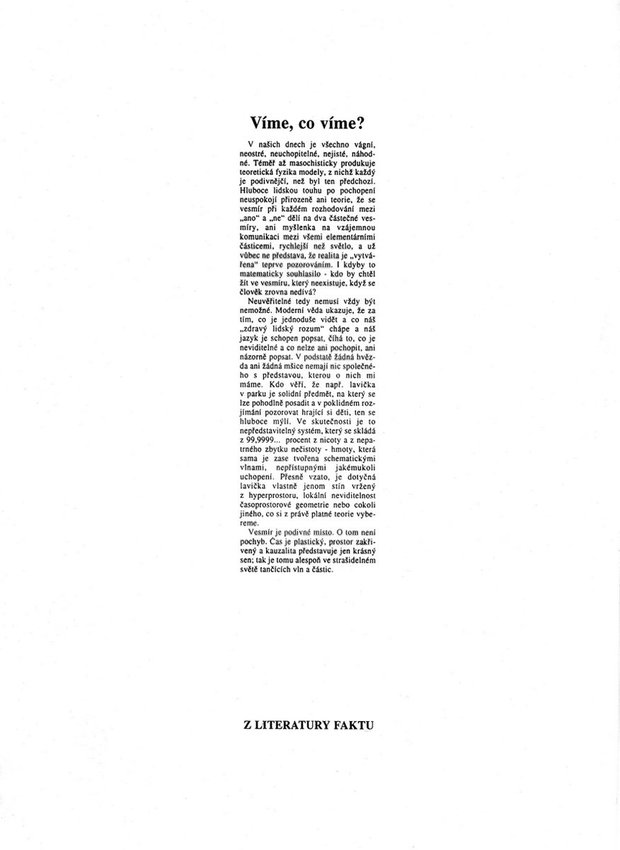Do We Know, What We Know? In these days, everything is so vague, unclear,
untouchable, uncertain, casual. The theoretic physics produces almost in a
masochistic way various models, and each new one is stranger than the previous
one. The deep human desire for understanding is of course not satisfied with the
theory that the Universe splits into two partial spaces every time upon making a
choice between Yes and No, nor with the idea of the mutual communication among
all the elementary particles faster than light, nor the concept that reality is
formed only by watching. Even if it is mathematically correct – who wants to
live in a space that does not exist when you are not watching?
The unbelievable does not always have to be impossible. The modern science shows
that the invisible, inconceivable and indescribable is lurking behind the things
easy to see and easy to understand for our common sense and easy to describe by
the language. At bottom, no star or no green-fly has got anything to do with the
idea that we have got about them. The one who believes that the bench in the
park is a serious object on which you can comfortably sit and watch the children
play in quiet meditation, is mistaken. In fact, it is an unimaginable system
which consists of … 99.9999 percent of nothing and the rest of it is dirt, a
mass formed by exploded waves inaccessible by any assumption. To be correct, the
said bench is only a shade from the hyperspace, a local invisibility of
space-time geometry or anything else you just chose from the currently valid
theory.
The Universe is a strange place. No doubt. The time is plastic, the space is
curved, and causality is only a beautiful dream. This is how it goes in the
scary world of dancing particles. March 1995

